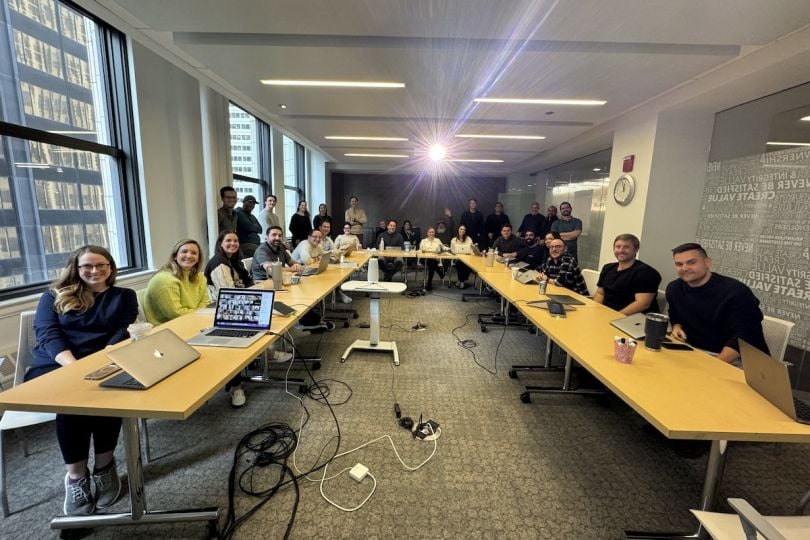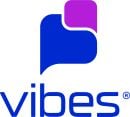Before an artist ever puts their brush to the canvas, a thorough, reflective process takes place — each concept fleshed out to the fullest extent possible, the hue of paint in the color pallet thoughtfully chosen and reference sketch completed to execute their vision.
Likewise, customer success managers prepare for quarterly business reviews with precision and foresight, planning each agenda item, establishing insights through research and developing presentations that convey their roadmap for success.
CSMs, too, must ask themselves: ‘Who is my audience?’; ‘What is my intention — and theirs?’; ‘How do I facilitate a discussion to reach a productive resolution?’.
QBRs require a delicate balance of providing insights and fostering collaborative dialogue to align both parties toward common goals. Ultimately, the success of a QBR, much like the culmination of an art piece, is measured not only by the immediate reaction it elicits but also by its lasting impact on fostering deeper relationships.
At companies like Clari and Vibes, CSMs have refined their approaches to QBRs, ensuring they meet and exceed customer expectations. They shared their strategies and invaluable advice for leveraging these meetings as opportunities for growth.
Through advanced forecasting, pipeline management and collaboration tools, Clari’s comprehensive revenue operations platform enhances revenue precision and prevents revenue leaks for global leaders like Okta, Adobe, and Zoom.
What are the main strategies you use to lead an effective quarterly business review, and how have these strategies proven helpful?
The three main strategies I use to lead an effective QBR are planning ahead of time, doing my research and keeping my slides concise. Connecting with your main point of contact before the scheduled call to align on the agenda and expected content is key. This proactive step ensures that you enter the QBR equipped with a well-structured agenda that addresses the company’s revenue objectives but also delves into insights regarding revenue leak. Doing so provides a path to a clear and productive dialogue, making a more cohesive partnership moving forward.
Doing your research prior to a call is paramount. Alongside other tools and resources, I rely on Clari to grasp the key priorities of my customers, comprehend their revenue tracking methods and pinpoint opportunities to enhance value.
Making sure your slides are concise is important. Overloading customers with excessive content can dilute the message you’re aiming to convey. We want them to walk away with as much value as possible from the conversation.
“Overloading customers with excessive content can dilute the message you’re aiming to convey.”
What’s a common mistake you once made conducting a QBR? How did you learn from that and apply that lesson moving forward?
Getting too tactical. I have often seen CSMs — and I’m guilty of it myself — starting to solve problems on a QBR: it’s easy to come to a QBR with a lot of data and then get into the weeds quickly. It’s important to remember who your audience is and what they care about. If a CRO is on a call, discussing process changes and individual usage metrics is probably not the best use of time; instead, high-level data points that speak to their revenue objectives are more likely to spark a meaningful conversation.
What is your top piece of advice for other CSMs wishing to improve their approach to QBRs?
Thorough research beforehand is crucial for a successful QBR. This means close collaboration with your main point of contact for preparation. It also includes listening to earnings calls, reading online articles and utilizing tools like Clari to identify areas for improvement. Additionally, examining adoption metrics allows for recommendations on operating cadences, workflows and effective methods for detecting revenue leak.

Vibes boosts brand engagement via its advanced mobile messaging platform with direct carrier connections for SMS/MMS, mobile wallet and push notifications, optimizing customer relationships.
What are the main strategies you use to lead an effective quarterly business review, and how have these strategies proven helpful?
Quarterly business reviews are a vital time to check in with your customers to not only provide them with guidance on their performance but also to show them your value as their partner. When planning for a QBR, I always start with defining my goals for the meeting ahead of time; true strategic guidance should look different for every customer. I then use my knowledge of their business objectives to shape and define what is important to them, then build an action plan with at most three recommendations that best resonate with the team.
With QBRs, less is always more. I like to use fewer slides and engage in genuine dialogue that leads the overall meeting. Your customers will thank you and feel valued when they can share their feedback and ideas. A QBR should always be collaborative and leave the customer feeling like they understand the ROI they are receiving from the partnership and what they can look forward to. Finally, the follow-up email after the QBR that recaps what you discussed, action items and who owns what next step is critical, making sure it’s clear and easy to digest.
What’s a common mistake you once made conducting a QBR? How did you learn from that and apply that lesson moving forward?
Every interaction with a customer should be a learning opportunity. After countless QBRs, one of the common mistakes that I have made is going into these meetings with a rigid agenda and ideas that I thought the customer would want to hear. I’ve learned that listening to your customers and asking in-depth questions during the QBR is where the true value lies. Instead of going into a QBR with a long and detailed slide deck, embrace the natural flow of conversation and only use slides as a visual aid for ideas most relevant to their goals. Choosing to only review slides your audience can read on their own can risk losing their attention and missing out on the critical component of collaborative discussion.
“I’ve learned that listening to your customers and asking in-depth questions during the QBR is where the true value lies.”
Some of my best QBRs have started with me asking my customers what they want most in the upcoming year and what success looks like. As I listen to their ideas, I may jump ahead to slides I prepared with insights and recommendations that are relevant or helpful as a visual aid. This allows the customer to feel heard and my team and I to better understand how to meet their needs.
What is your top piece of advice for other CSMs wishing to improve their approach to QBRs?
My top advice for all of my CSM colleagues is to go into your QBRs with a prepared agenda and presentation but let the discussion lead above everything else. Allow the conversation to flow, using the agenda to stay focused and your presentation for visual aid and extension of value. This is how I’ve seen and experienced true collaboration happen, which customers find incredibly valuable. Also, don’t forget that the follow-up is just as important as the meeting itself. At the end of the day, trust your gut and always be listening to learn more than you may have thought possible.









